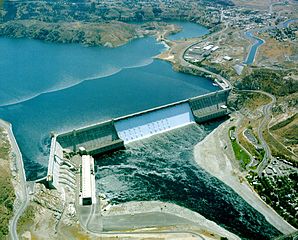Energy can neither be created nor destroyed, only changed. That’s an accepted tenet. And neither can energy be lost. There is, however, loss in electrical transmission lines, the loss occurring as a result of friction created from electrons passing through conductor material. Since transmission line conductors are not perfect conductors, loss occurs. The loss of electrons due to friction in the electric line results in heat being produced.

At the component level, such heat is typically dissipated using what are called “heat sinks.” If it can be visualized what a sink does, collecting water and allowing it to be redirected elsewhere, what the heat sink does is take the heat transferred to it and redirects it to the surrounding air. The greater the efficiency of the electronic component the more the energy savings and consequently the lower the grid power losses.
There is also less in the way of energy losses if electricity consumption is less.
With regard to building type, it is more of the same. The more efficient the building design, the greater the energy savings. The name of the game here being conservation, this also translates into increased energy efficiency for electricity entering said structure, ultimately making the energy-consumption dollar of the building owner go farther.
What all of this is pointing toward is reducing carbon footprint size whether on a macro or micro scale.
So, getting back to my earlier point about transmission line loss, reduced losses means greater electricity availability, given nothing else in the energy production and distribution equation changes.
The same would apply to, say, an on-site energy-supply source.
![SolarpanelBp[1]](https://alankandel.scienceblog.com/files/2012/12/SolarpanelBp1-300x168.jpg)
And such is relatively easily accomplishable.
Now if only the same could be said for transportation-based losses.
Image at top: U.S. Department of the Interior, Bureau of Reclamation
– Alan Kandel